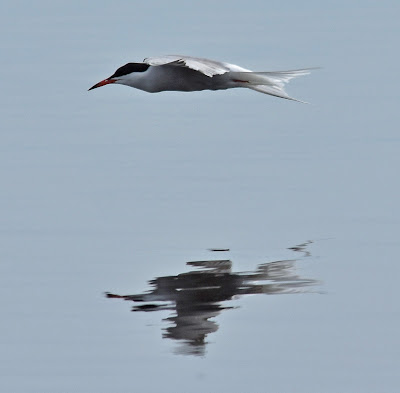 |
| Singing Sedgie (c) Mark Chivers |
The meteorologists say it is now officially summer, and this
weekend it certainly seemed that way with warm sunshine predominant until late
on Sunday afternoon. All of the hedges are splashed with pink and white from
the Dog Roses and in the Roman Road and along the bridleway the elder is
turning up panicles of creamy white flowers towards the sun. Beside the path to
the first screen, hidden in the greenery is a spotted orchid, exotic amid the
more mundane grasses. In the same area a privet is in flower, filling the air
with its heavy scent that is neither totally pleasant nor totally unpleasant,
bur veers between the two!
 |
| Dog Rose (c) Bark |
 |
| Common Spotted Orchid (c) Tom N-L |
The birdlife on the reserve is now going about the serious
business of raising young and in some cases starting to set about raising second
broods. There is less time for singing and more energy to be dedicated to
foraging. There are already family parties of newly fledged, custard coloured
Blue Tits hunting the hedgerows for food.
 |
| Custard coloured blue Tits and foraging Whitethroat (c) Bark |
Out in the reedbed things are also stirring. We are seeing a
lot more Bittern activity after a much quieter couple of months. It is probable
that these are females beginning to make feeding flights in order to provision
newly hatched chicks. We will be monitoring this process in order to get some
idea of how many there are and where they might have nested.
 |
| Bittern Sunday (c) JR |
The Marsh Harriers
are also very active over the reedbeds. We are not completely certain but think
that there is one mature male and two females with two different nests. We have
observed food passes and nest materials being delivered, as well as aerial
conflict with the Red Kites.
 |
| Common Tern and Sedgie (c) Bark |
In the increasingly long grass out on Greenaways our pair of
Common Cranes can be spotted stalking about and feeding. It looks very much as
if they are undergoing their first major full moult. During the next few weeks
they will be to all intents and purposes flightless as they moult and replace
their main flight feathers. They should be fairly secure out there, as there is
abundant cover and there will be a great deal of food as the various insect
hatches take place, the grasses and sedges set seed and the grasshopper
population booms. The juvenile interloper from last week seems to have moved on
but could still be out lurking on the MOD land or even on Maltpit.
 |
| Cuckoos above (c) JR below (c) Tom N-L |
Cuckoos are still easy to see and hear. They favour certain
oak trees as preferred song posts and chase between them. The oaks behind the
first screen are very popular as is the last big oak along the bridleway past
the turning down to the hide. The females can sometimes be seen perched on the
fence posts overlooking ditches beside the bridleway.
 |
| Anxious looking Reed Warbler (c) JR |
They are waiting for
their chance to dive into a Reed Warblers nest, that they have previously
spotted and there lay their egg. They watch and wait for the warbler to be out
feeding and then make their move.
 |
| Turtle Doves above (c) Tom N-L lower two (c) JR |
The Turtle Doves are moving between several different
songposts too. One of which is beyond the Roman Road as well as the familiar
spots on the telegraph poles and in the oak beside the bridleway. We have also
had a recent report of a purring bird over at Oddington, in a place that used
to be a regular site, but which has not been used for several years. People are
coming to the reserve specially to see this iconic summer visitor, on Sunday I
met an RSPB members group, which had come down from Derbyshire. They were
delighted to have seen the doves but also pleased and surprised to see the Cranes
as well.
 |
| Male Beutiful Demoiselle (c) P Greenaway, Female and Speckled Wood (c) Bark |
The first Black Hairstreaks were on the wing on Saturday
morning in the Roman Road area, although in the windier conditions on Sunday we
failed to re-find them. There were Beautiful Demoiselles there and on Friday a
Downy Emerald Dragonfly was seen. A Banded Demoiselle was along the path out to
the first screen. As can be seen from my photograph (on the blogsite only) a
Red Admiral endorsed the RSPB sign about making a home for nature. I am sure
ther will be more of the same in the summer weeks to come.
 |
| A home for nature! (c) Bark |



















Great post, you wrote it beautifully and these are really good pictures. Always good to see nature, this is nature at its best. Thank you for sharing it
ReplyDelete